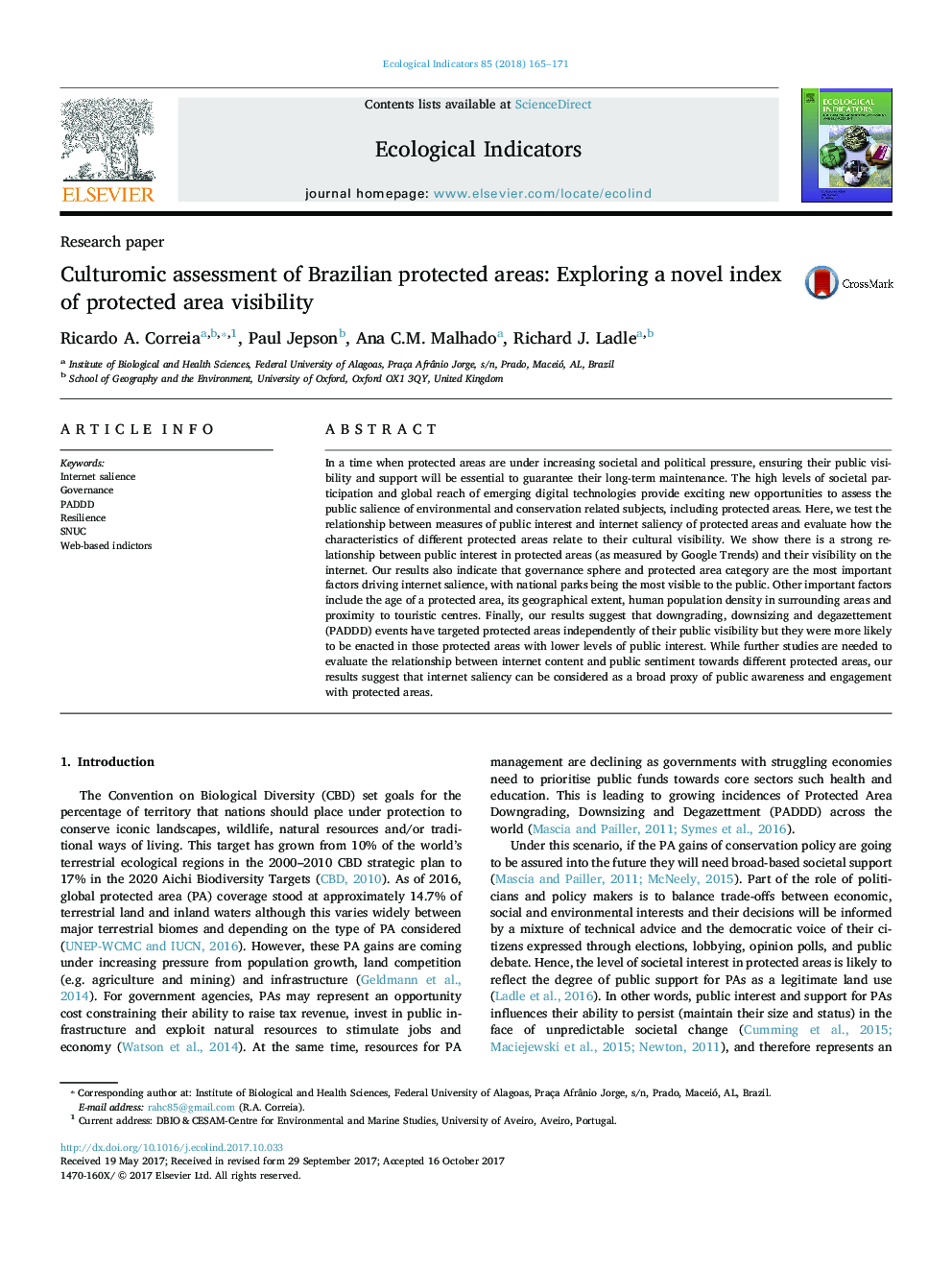| Article ID | Journal | Published Year | Pages | File Type |
|---|---|---|---|---|
| 8845659 | Ecological Indicators | 2018 | 7 Pages |
Abstract
In a time when protected areas are under increasing societal and political pressure, ensuring their public visibility and support will be essential to guarantee their long-term maintenance. The high levels of societal participation and global reach of emerging digital technologies provide exciting new opportunities to assess the public salience of environmental and conservation related subjects, including protected areas. Here, we test the relationship between measures of public interest and internet saliency of protected areas and evaluate how the characteristics of different protected areas relate to their cultural visibility. We show there is a strong relationship between public interest in protected areas (as measured by Google Trends) and their visibility on the internet. Our results also indicate that governance sphere and protected area category are the most important factors driving internet salience, with national parks being the most visible to the public. Other important factors include the age of a protected area, its geographical extent, human population density in surrounding areas and proximity to touristic centres. Finally, our results suggest that downgrading, downsizing and degazettement (PADDD) events have targeted protected areas independently of their public visibility but they were more likely to be enacted in those protected areas with lower levels of public interest. While further studies are needed to evaluate the relationship between internet content and public sentiment towards different protected areas, our results suggest that internet saliency can be considered as a broad proxy of public awareness and engagement with protected areas.
Keywords
Related Topics
Life Sciences
Agricultural and Biological Sciences
Ecology, Evolution, Behavior and Systematics
Authors
Ricardo A. Correia, Paul Jepson, Ana C.M. Malhado, Richard J. Ladle,
